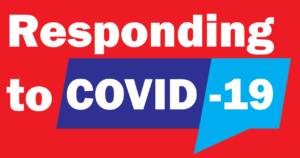UPDATE ON NEW LAWS SIGNED BY GOVERNOR NEWSOM INCLUDING MANDATORY TESTING

Following our summary of legislation submitted to Governor Newsom for signature, the following employment related laws have officially been signed by the Governor as of September 25, 2020:
MANDATORY COVID REPORTING
AB 685: Expands Cal/OSHA’s authority regarding workplace COVID-19 cases and imposes new COVID-19 reporting requirements on all California employers starting January 1, 2021. This law will remain in effect through December 31, 2023.
AB 685 authorizes Cal/OSHA to act when it believes that employees are exposed to a risk of COVID-19 that creates an imminent hazard to the employee. Under the new law, Cal/OSHA is authorized to:
- Prohibit entry or access to a worksite;
- Prohibit performance of an operation or process at the worksite; or
- Require posting of an imminent hazard notice at the worksite.
Cal/OSHA is also permitted to issue a citation alleging a serious violation relating to COVID-19 without providing the employer with the 15-day advanced notice and opportunity to rebut the violation that is usually required before such a citation can be issued.
AB 685 also requires California employers to do the following within one business day of receiving a “notice of potential exposure” to COVID-19:
- Provide a written notice to all employees, and the employers of any subcontracted employees, who were on the premises at the same “worksite”(defined below) as the “qualifying individual” (defined below) within the “infectious period” (defined below) that they may have been exposed to COVID-19.
- Provide a written notice to the. bargaining units or union representative, if any, of employees described above.
- Provide all employees who may have been exposed and the exclusive representative, if any, with information regarding COVID-19-related benefits to which the employee may be entitled under applicable federal, state, or local laws including,
- Notify all employees, and the employers of subcontracted employees and the exclusive representative, if any, of the disinfection and safety plan that the employer plans to implement and complete per guidelines of the Centers for Disease Control.
- Employers are also required to notify their local public health department if a COVID-19 outbreak (as currently defined by the California State Department of Public Health) occurs at a worksite. This notice must be provided within 48 hours of the employer learning of the outbreak.
An employer is considered to have “notice of potential exposure” to COVID-19 at a worksite when any of the following occur:
- The employer or representative of the employer receives notice from a public health official or licensed medical provider that an employee was exposed to a qualifying individual at the worksite.
- The employer or representative of the employer receives notice from an employee, or their emergency contact, that the employee is a qualifying individual.
- The employer or representative of the employer receives notice through the testing protocol of the employer that the employee is a qualifying individual.
- The employer or representative of the employer receives notice from a subcontracted employer that a qualifying individual was on the worksite of the employer receiving notification.
A “worksite” is defined as the building, store, facility, agricultural field, or other location where a worker worked during the infectious period. It does not apply to buildings, floors, or other locations of the employer that a “qualified individual” did not enter.
A “qualifying individual” means any person who has any of the following:
- A laboratory-confirmed case of COVID-19, as defined by the California Department of Public Health.
- A positive COVID-19 diagnosis from a licensed health care provider.
- A COVID-19-related order to isolate provided by a public health official.
- Died due to COVID-19, in the determination of a county public health department or per inclusion in the COVID-19 statistics of a county.
The “infectious period” is defined as the time that a COVID-19-positive individual is infectious, as defined by the California Department of Public Health. Currently, that period is 14 days.
Employers are also prohibited from retaliating against a worker for disclosing a positive COVID-19 test, diagnosis, or order to quarantine or isolate.
FAMILY AND MEDICAL LEAVE
SB 1383: Requires that California employers with as few as five employees provide family and medical leave rights to their employees. This new law significantly expands the existing family and medical leave entitlements and goes into effect on January 1, 2021. Under pre-existing law, employers were not required to provide family care and medical leave under the California Family Rights Act (CFRA) if the employee seeking leave worked at a worksite with fewer than 50 employees within a 75-mile radius. Similarly, employers were not required to provide “baby bonding” leave under the New Parent Leave Act (NPLA) if the employee seeking leave worked at a worksite with fewer than 20 employees within a 75-mile radius.
SB 1383 expands the obligation to provide leave to small employers not covered before. The new law requires employers with at least five employees to provide an otherwise eligible employee with up to 12 workweeks of unpaid job-protected leave during any 12-month period for certain covered reasons. The employer must maintain and pay for the employee’s coverage under a group health plan for the duration of the leave at the level and under the conditions coverage would have been provided if the employee had continued in employment continuously for the duration of the leave.
SB 1383 also expands the covered family members and potential reasons for which an eligible employee may take leave. Under SB 1383, eligible employees may take leave to bond with a new child of the employee or to care for themselves or a child, parent, grandparent, grandchild, sibling, spouse, or domestic partner.
Under SB 1383, employees will still need to meet eligibility requirements, including 12 months of service and 1,250 hours worked for the employer in the previous 12-month period, to qualify for family and medical leave.
NEW FRAMEWORK FOR WORKERS’ COMPENSATION CLAIMS
SB 1159: Creates a new framework for COVID-19-related workers’ compensation claims. This is emergency legislation that takes effect immediately. Governor Newsom had previously signed Executive Order N-62-20, which created a rebuttable presumption that certain employees who test positive for COVID-19 contracted the virus at work for workers’ compensation purposes. This law expands on and extends the presumption established by the prior Executive Order.
SB 1159 states that a “disputable presumption” exists for an employee who suffers illness or death resulting from COVID-19 on or after July 6, 2020 through January 1, 2023. Thus, the law creates a presumption that an illness or death resulting from COVID-19 has arisen out of and in the course and scope of employment. However, this presumption is disputable. An employer may dispute the presumption with evidence such as: (1) measures in place to reduce potential transmission of COVID-19 in the employee’s place of employment, (2) the employee’s non-occupational risks of COVID-19 infection, (3) statements made by the employee, and (4) any other evidence normally used to dispute a work-related injury.
The presumption created by SB 1159 applies to all employees who: (1) test positive during an outbreak at the employee’s specific place of employment, and (2) whose employer has five or more employees.
The following conditions must exist for the presumption to apply:
- The employee tests positive for COVID-19 within 14 days after a day that the employee performed labor or services at the employee’s place of employment at the employer’s direction.
- The day on which the employee performed labor or services at the employee’s place of employment at the employer’s direction was on or after July 6, 2020. This must be the last date the employee performed labor or services at the employee’s place of employment at the employer’s direction before the positive test.
- The employee’s positive test occurred during a period of an outbreak at the employee’s specific place of employment.
SB 1159 states that if an employee is eligible for paid sick leave benefits “specifically available in response to COVID-19” such as those available under FFCRA, such benefits must be used and exhausted before using any temporary disability benefits. However, if an employee does not have such paid sick benefits available to them, then the employee must be provided temporary disability benefits without the traditional three-day waiting period.
 |
 |
| ERICA M. SOROSKY esorosky@ptwww.com (949) 851-7271 |
ERIN K. OYAMA eoyama@ptwww.com (949) 851-7288 |

